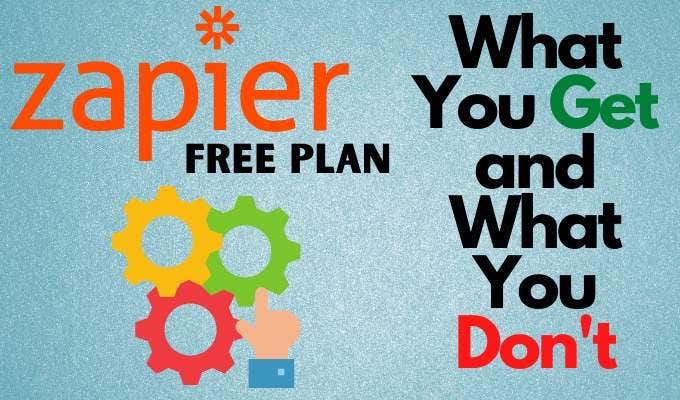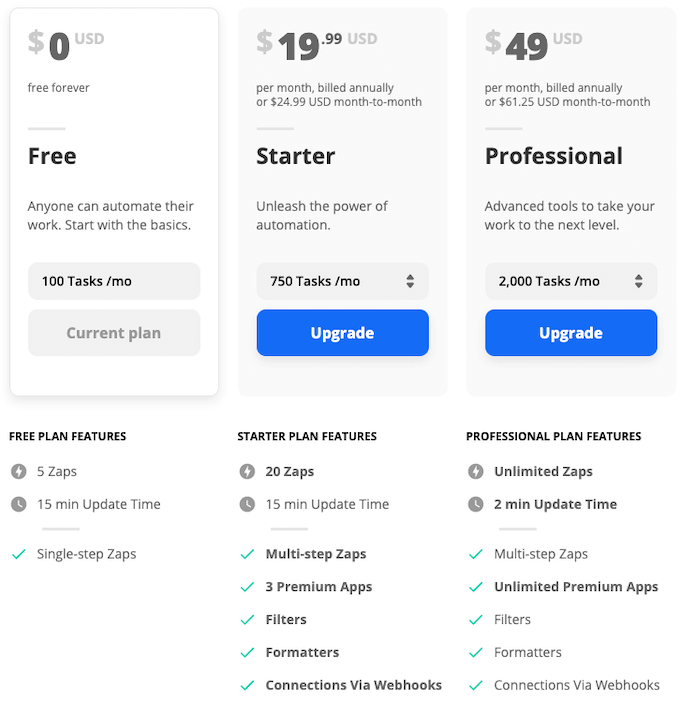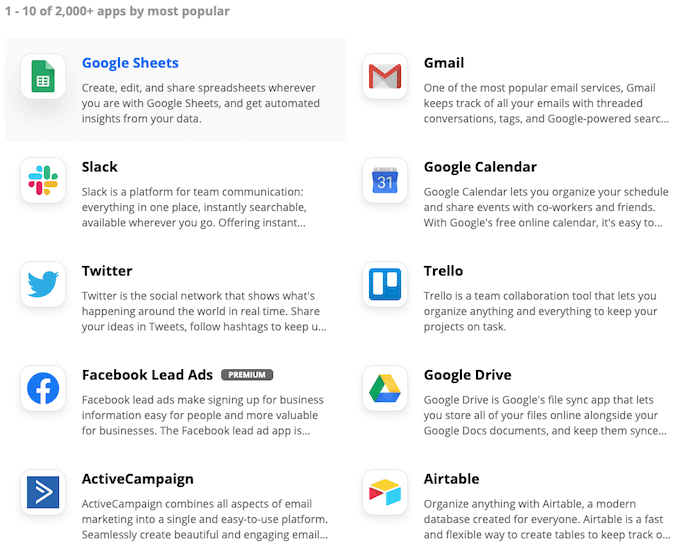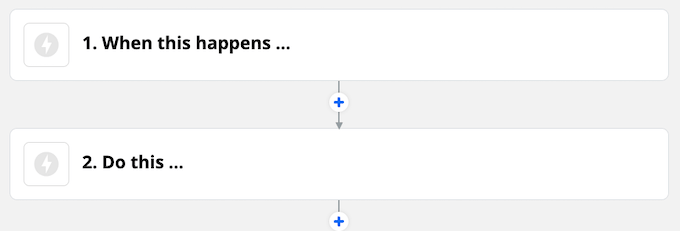Zapier is an automation tool in the same vein as IFTTT, but is arguably more powerful in many ways. While IFTTT excels at smart home applications, Zapier sees a lot of usage with regard to business and productivity related applications. Perhaps one of the most powerful Zapier features is the ability to set up multi-step automations.
Of course, these powerful features are locked behind a paywall. This guide will take a look at Zapier’s free plan and help you decide whether it’s worth trying, or whether shelling out a little bit of cash each month for a premium plan will give you the extra tools and features you need.

The Zapier Free Plan
Before explaining what the Zapier free plan holds, you need to understand a few terms. Zapier refers to its automations as “Zaps,” so any reference to a Zap is a reference to an automated, linked task.
The Zapier free plan allows users to set up to 5 Zaps. It also limits users to 100 tasks per month; in other words, 100 activations of your Zaps before the service stops working until the next month. The Zapier free plan also limits users to single-step Zaps, and it only checks for updates every 15 minutes.
With all this in mind, what is the Zapier free plan good for? The answer is simple: testing. It’s a great way to try out Zapier and discover whether the basic features and the interface are things you would enjoy using. However, for any real form of automation, it’s just too limited.

The next level up is infinitely more useful. For $20 per month (if billed annually), you get 750 tasks per month, up to 20 Zaps at a time, but are still limited with a 15 minute update time. However, you get access to Multi-Step Zaps, 3 premium apps, filters, formatters, and connections via webhooks.
It’s a far more useful program, but it is a bit on the pricier side of things. Try out the free plan and decide whether Zapier can meet the goals you need it to before you choose to commit funds. However, Zapier does provide users with a 14-day free trial of their services.
Zapier App Compatibility
Zapier is compatible with more than 2,000 different applications, but some of the most powerful (and most popular) are Google Sheets, Gmail, Slack, Twitter, and Trello. Like we stated before, Zapier is geared towards productivity rather than home automation.

In fact, Zapier has almost no smart home compatibility at all. It is compatible with 36 different Internet of Things apps, but only a few of these applications are commonly used (like Philips Hue and Google Assistant.)
Some apps are considered to be “Premium” apps on Zapier’s platform, including Salesforce, Shopify, PayPal, and GoToWebinar. These premium applications are only accessible by someone using one of the paid Zapier plans.
Zapier Setup
One strong point of Zapier is that it doesn’t take much work to get started. You can sign up through Google to get started. From that point, creating a Zap is as simple as selecting from a list of options.
First, choose the trigger for your Zap to take effect. This can be almost anything. In the example, we chose for a specific search term in Twitter to be the trigger. When Zapier performs a search and finds results, it triggers the action.

The second step is the effect. Choose what you want to happen when Zapier is triggered. Continuing from the above example, the effect is to send an email containing the relevant information about the search term to a specified email address.
If you’re using a plan that allows you to set up multi-step Zaps, you just have to click the plus symbol underneath the second step to continue creating instructions.
Is the Zapier Free Plan Worth Using?
The free plan is so limited in features and functionality that it has little to no real-world application. If you only need to automate a few tasks that rarely trigger each month, then it could fit your needs. On the other hand, if you plan to create an automation workhorse, you will quickly run out of tasks unless you pay for a premium plan.
The Zapier free plan isn’t even that useful for testing purposes, as anyone interested in the service can try out a premium plan for 14 days after signing up. However, Zapier itself is a tremendously powerful tool, particularly with regard to linking Slack and other business communication tools to other services.